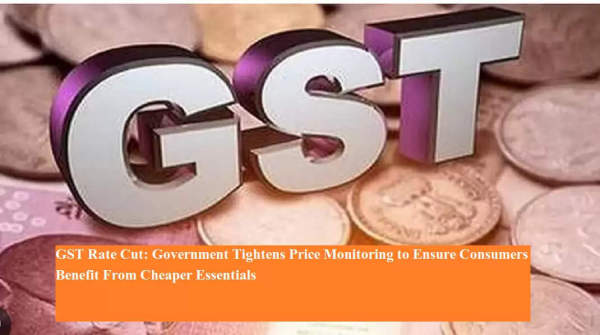
The Indian government has taken a firm stance to ensure that the recent GST rate cuts, effective from September 22, 2025, bring direct relief to consumers. With the revised structure, nearly 99% of everyday household essentials such as pulses, edible oils, butter, toothpaste, and shampoo have become cheaper. Additionally, high-value items like electronics, vehicles, and construction materials have also seen a tax reduction, making them more affordable for buyers.
The central government’s primary goal is to boost purchasing power, encourage consumption, and support economic growth by ensuring that the benefits of lower GST rates reach the common man without distortion.
Following the tax cut, the Finance Ministry noticed that not all companies were passing on the full benefit to end consumers. Some e-commerce platforms and retailers were still charging old prices, effectively pocketing the difference.
To tackle this, the Central GST authorities have been instructed to closely monitor the market. They will now submit monthly brand-wise reports on the prices of 54 key items, ranging from basic groceries to consumer goods. E-commerce firms are also under scrutiny, with a clear warning to maintain pricing transparency and avoid profiteering.
This level of vigilance is expected to enhance consumer protection and ensure fair competition across both offline and online markets.
While this move is a win for consumers, it poses challenges for e-commerce companies and large retailers. By being compelled to lower prices, their profit margins may shrink, potentially affecting quarterly earnings and stock market performance.
Analysts predict that the increased compliance burden and tighter scrutiny could also lead to short-term volatility in the sector. However, in the long run, enforcing fair pricing practices will help build greater consumer trust in online marketplaces.
For the average household, this change translates into lower prices for essential items. Everyday goods like pulses, cooking oil, dairy products, and personal care items are now available at reduced rates, directly easing the burden on household budgets.
Middle-class families, in particular, stand to benefit as their purchasing power increases, enabling them to allocate savings towards other needs or investments. The GST cut also ensures that consumers receive value for money, eliminating unfair markups by sellers.
The government expects the GST rate cut to stimulate domestic consumption, which in turn will accelerate overall economic growth. By making goods more affordable, the move is likely to drive demand for small and medium enterprises (SMEs), providing them with new business opportunities.
Higher demand will also encourage companies to expand production, ultimately creating more employment opportunities across sectors. Experts believe that this reform will play a key role in strengthening India’s economy at a crucial time.
Prime Minister Narendra Modi described the reform as a festive gift for citizens, highlighting that the announcement came just ahead of Navratri celebrations. With festivals traditionally driving higher consumer spending, the timing of this tax relief is expected to further boost festive sales across industries.
GST rate cut effective from September 22, 2025, covering nearly 99% of essential household items.
Government mandates monthly brand-wise price reporting for 54 key goods.
E-commerce platforms under strict watch to ensure full benefits reach consumers.
Retail margins may shrink, impacting earnings, but consumers gain through fair pricing.
Reform expected to boost demand, strengthen SMEs, and create jobs.
The GST reduction is not just a tax reform—it is a consumer-centric economic push aimed at balancing affordability, transparency, and growth. With stricter monitoring in place, citizens can expect genuine relief in their everyday expenses, while the economy gears up for a stronger growth trajectory.